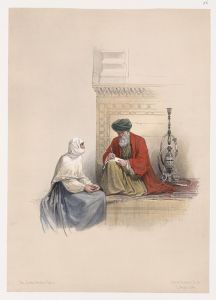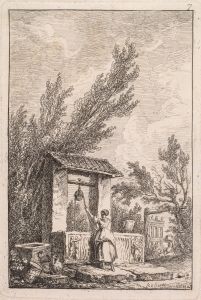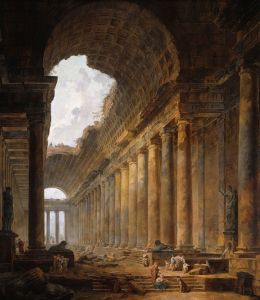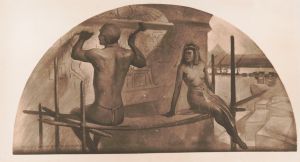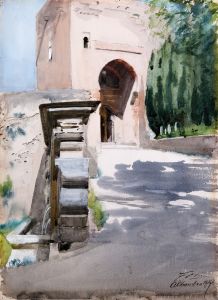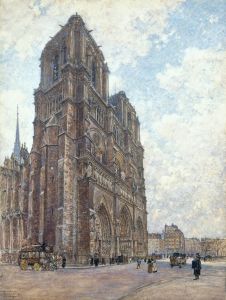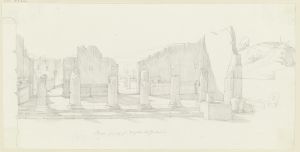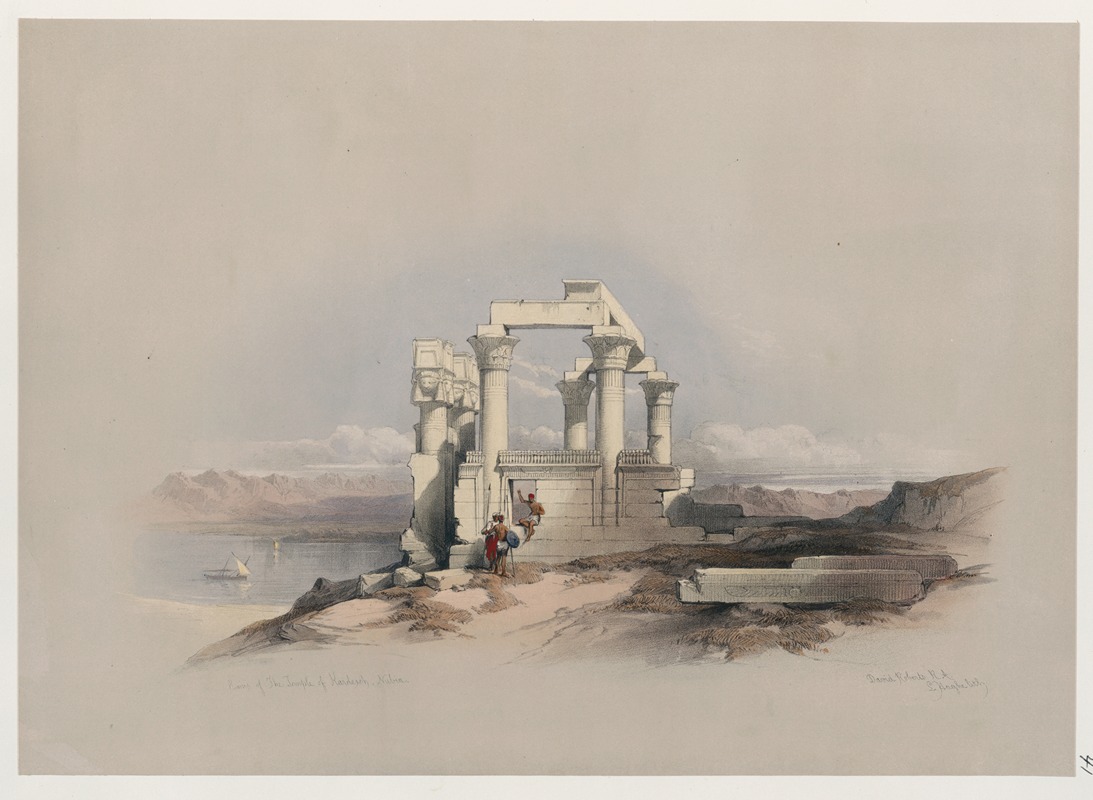
Ruins of the Temple of Kardeseh [Qirtâsî], Nubia.
A hand-painted replica of David Roberts’s masterpiece Ruins of the Temple of Kardeseh [Qirtâsî], Nubia., meticulously crafted by professional artists to capture the true essence of the original. Each piece is created with museum-quality canvas and rare mineral pigments, carefully painted by experienced artists with delicate brushstrokes and rich, layered colors to perfectly recreate the texture of the original artwork. Unlike machine-printed reproductions, this hand-painted version brings the painting to life, infused with the artist’s emotions and skill in every stroke. Whether for personal collection or home decoration, it instantly elevates the artistic atmosphere of any space.
"Ruins of the Temple of Kardeseh [Qirtâsî], Nubia" is a painting by the Scottish artist David Roberts, who is renowned for his detailed and evocative depictions of the Middle East and North Africa. This particular work is part of Roberts' extensive collection of lithographs and paintings that document his travels through Egypt and Nubia in the early 19th century.
David Roberts was born on October 24, 1796, in Stockbridge, Edinburgh, Scotland. He initially worked as a house painter and decorator before pursuing a career as a scenic painter for theaters. His artistic talents and interests eventually led him to travel abroad, where he sought to capture the grandeur and mystique of ancient civilizations.
In 1838, Roberts embarked on a journey to the Middle East, which included visits to Egypt, Nubia, the Sinai Peninsula, and the Holy Land. During his travels, he meticulously sketched and painted numerous historical sites, temples, and landscapes. These works were later turned into lithographs by Louis Haghe and published in a series of volumes titled "The Holy Land, Syria, Idumea, Arabia, Egypt, and Nubia" between 1842 and 1849.
The "Ruins of the Temple of Kardeseh [Qirtâsî], Nubia" depicts the remnants of an ancient temple located in Nubia, a region that extends along the Nile River in what is now southern Egypt and northern Sudan. The temple, known as Qirtâsî, is one of many archaeological sites in Nubia that date back to various periods of ancient Egyptian history.
Roberts' painting captures the temple's majestic ruins, set against a stark and dramatic landscape. The composition likely includes elements such as fallen columns, fragmented walls, and other architectural features that convey the temple's former grandeur and its current state of decay. The artist's attention to detail and use of light and shadow bring a sense of realism and depth to the scene, allowing viewers to appreciate the historical and cultural significance of the site.
Roberts' works, including the "Ruins of the Temple of Kardeseh [Qirtâsî], Nubia," played a crucial role in bringing the wonders of the Middle East and North Africa to the attention of the European public. His paintings and lithographs provided a visual record of these regions at a time when travel was difficult and photography was in its infancy. As a result, Roberts' art not only served as a source of inspiration for other artists but also contributed to the growing interest in archaeology and the study of ancient civilizations.
Today, David Roberts is celebrated for his contributions to the field of Orientalist art, and his works continue to be admired for their historical accuracy, artistic skill, and evocative portrayal of some of the world's most iconic ancient sites. The "Ruins of the Temple of Kardeseh [Qirtâsî], Nubia" remains a testament to Roberts' dedication to capturing the beauty and mystery of the ancient world.





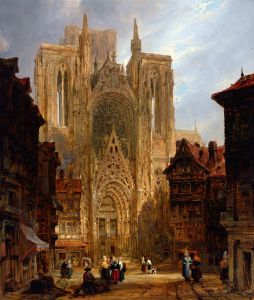
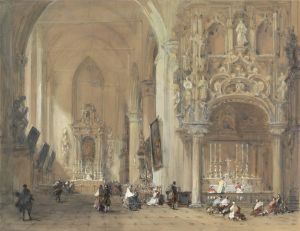
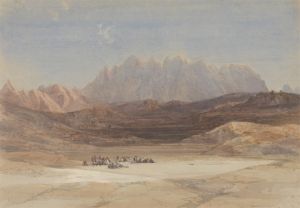
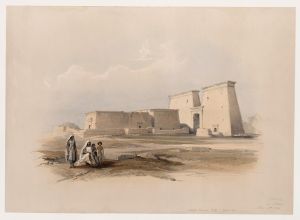
![Karnac [Karnak]. Nov. 29th, 1838](/imgs/217503/s/david-roberts-karnac-karnak-nov-29th-1838-5a10b435.jpg)

